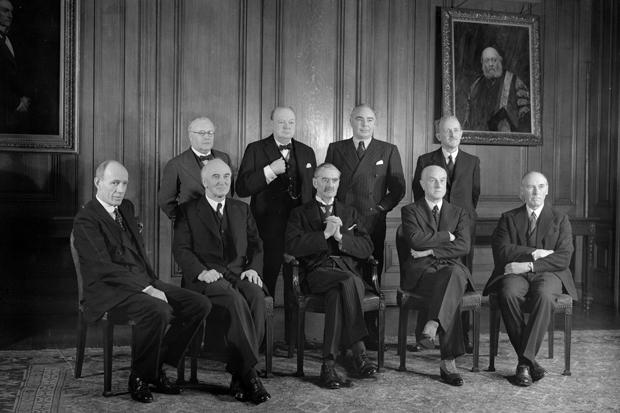
The dramatic Allied failure in the Norway campaign of April 1940 destroyed Neville Chamberlain as British PM and, ironically, elevated the fiasco’s architect, First Lord of the Admiralty Winston Spencer Churchill, to wartime leadership.
These two excellent books, Nicholas Shakespeare’s Six minutes in May: how Churchill unexpectedly became prime minister (Harvill Secker, 2017) and John Kiszely’s Anatomy of a campaign: the British fiasco in Norway, 1940 (Cambridge, 2017), deal exhaustively with the Norwegian campaign and its consequences. Shakespeare masters the politics of the Chamberlain government and the House of Commons while Kiszely draws comprehensive lessons about strategic and military blunders that led to a serious Allied reversal, almost immediately eclipsed by a greater defeat in France and the Low Countries the following month.
As bookends to an almost forgotten campaign, these two accounts are complementary in their analysis of the Norwegian battle and its aftermath, with surprising conclusions drawn. The contrast between the sputtering uncertainty of the British effort and the ruthless application of military might by the Germans under the Fuhrer’s personal watch couldn’t be clearer.
This contrast is best illustrated by Admiral Erich Raeder’s brilliant plan—code-named Weserberung—and the Wehrmacht’s commitment and speed in the campaign, with both the Luftwaffe and the Kriegsmarine playing critical supporting roles.
Strategically, the Nazis understood the value of intervening in Norway, from guaranteeing Swedish iron ore for their war economy to the provision of air and naval bases.
The British also understood the strategic value involved, but their planning and their execution fell well short. Their command structure can be politely described as cumbersome and disjointed, with each of the services pursuing their own goals. The resulting confusion, with decisions from the battlefield sometimes being referred to Whitehall, compounded original errors made in deploying the expeditionary force—made up of undertrained Territorials and supported by RAF squadrons of often obsolescent aircraft.
While both sides planned Norwegian operations, the British interception in neutral Norway’s waters of the German freighter Altmark carrying Allied POWs was the trigger for the German invasion. It drove Adolf Hitler into a fury, causing German strategy to crystallise.
Kiszely writes:
The Altmark incident on 16 February had a major impact on the place of Weserübung in German strategy. It convinced Hitler that Norway could not enforce its neutrality and that the British would no longer respect that neutrality. It also ‘provided a further spur’ to the operation by confirming intelligence reports that the Allies were, themselves, planning an operation in Norway.
On 9 April 1940, the Germans invaded by sea and air, with the Luftwaffe furnishing an incredible 500 transport aircraft for the Wehrmacht’s deployment. Denmark was occupied also, to ensure close support for the air campaign.
The British response is given this scathing assessment by Shakespeare:
For the British, the military expedition sent to Norway in response to the German invasion was a spectacular cock-up, with no one quite sure who was in charge in London, and on-the-spot generals and admirals fighting each other in the blizzards of Narvik. Seven months in the preparation, the eight week campaign became a by-word for bungling; a tragedy of bad organisation, missed opportunity and divided command, with interferences by the Admiralty, and with Churchill going behind the backs of the Chiefs of Staff and the War Office, even his own admirals, and in spite of his loyalty to Chamberlain, still playing his own game.
To their credit, the French Army committed the specialist Chasseurs Alpins, but the Luftwaffe’s dominance, reinforced by a lack of Allied anti-aircraft guns, saw the French suffer a similar fate to their British colleagues.
Defeat and withdrawal were the ultimate consequences of an Allied campaign so poorly crafted that the British troops were not even issued winter camouflage gear!
In the House of Commons, where wartime Britain maintained its rigorous parliamentary scrutiny of the war, the Norway debate followed. Officers were released from active service to participate, so the Commons was marked by the presence of uniforms. Among these MPs were the young John Profumo and Admiral Sir Roger Keyes, whose devastating critique of the Chamberlain government’s mismanagement of the Norway campaign was a powerful indictment: ‘It is a shocking story of ineptitude, which I assure the House ought never to have been allowed to happen.’
Telling words, as were those of Lloyd George. But the real damage was done by Tory MP Leo Amery, who concluded his blistering address by echoing Oliver Cromwell’s declaration to the Long Parliament:
You have sat here too long for any good you have been doing. Depart, I say, and let us have done with you.
In the name of God, go.
Chamberlain fell; Churchill became PM, with Clem Attlee as his deputy in a government of national unity. The resilient wartime framework emerged from the Norwegian collapse.
Shakespeare, whose uncle Geoffrey was a leading Conservative of the time, recreates the atmosphere of the musty Commons and Whitehall labyrinth; the manoeuvring; the ambitions and the treachery. These chapters are witness to a keen eye and astute judgement on the part of the author.
John Kiszely, whose four-decade career in the British Army saw him rise to the rank of lieutenant general, has written an engrossing account of cascading military failure. His research is meticulous; his conclusions carefully drawn and convincingly argued. It is superb battlefield history.
As for the German lessons of Norway? The Fuhrer’s putative military ‘genius’ was confirmed, and was reaffirmed as the Blitzkrieg swept to the Channel coast in the following weeks. This much touted ‘genius’, of course, would lead ultimately to another wintry landscape, at Stalingrad.